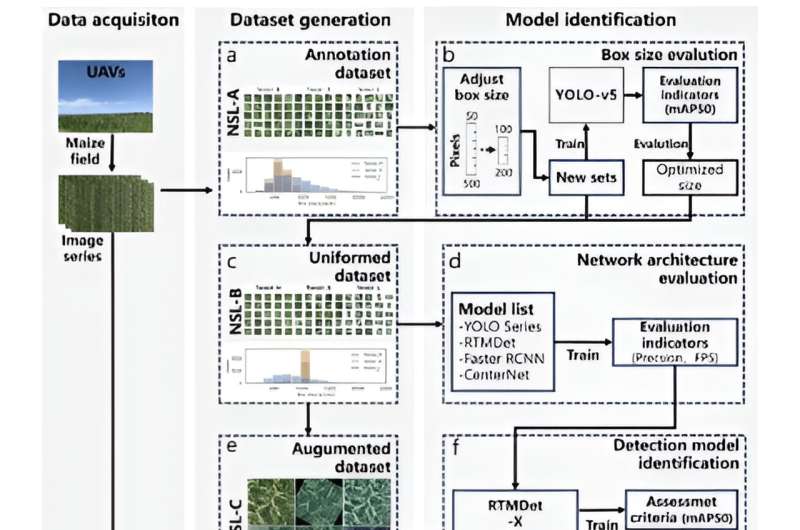
JUNE 27, 2024 by NanJing Agricultural University
Collected at: https://phys.org/news/2024-06-uav-deep-method-maize-tassel.html
A research team has developed an innovative method utilizing unmanned aerial vehicles (UAVs) and deep learning techniques to accurately identify tassel states in maize hybridization fields before and after manual detasseling. This approach significantly enhances tassel detection accuracy, achieving up to 98%, by using specific annotation and data augmentation strategies. This research holds significant value for improving tassel detection in agricultural fields, potentially reducing manual labor and increasing crop management efficiency through advanced UAV-based analysis systems.
Maize is one of China’s most important crops, and monitoring the tasseling stage is crucial for maize breeding operations. Recent advances in UAV technology have made them valuable for detailed crop monitoring. However, the large amounts of image data generated pose significant processing challenges. Current methods using CNN-based deep learning frameworks for tassel detection face difficulties with data acquisition and labeling, and traditional image processing techniques have limited effectiveness.
A study published in Plant Phenomics on 7 May 2024, aims to address these challenges by developing accurate detection models and annotated datasets for the dynamic growth stages of maize tassels.
This research selected an appropriate model for practical tassel detection applications by evaluating different versions of the RTMDet network model. Firstly, the computational resources required for model deployment were identified, considering the parameter sizes and resource requirements. The models were then assessed for object recognition accuracy, particularly mAP@0.5, recognizing differences in accuracy across object categories. Inference speed was also evaluated, crucial for real-time applications.
The RTMDet models, from Tiny to X versions, were trained on the NSL-C dataset. The average detection accuracy differed by a maximum of 1.1%, with the X version generally performing best, except for Tassel-L detection where the L version excelled. The S version was selected for its balanced performance and resource efficiency.
Further, the RTMDet-S models were trained on NSL-A, NSL-B, and NSL-C datasets to evaluate their accuracy in detecting tassels at different growth stages. Tests using the NSL-T dataset showed that the RTMDet-NSL-C model achieved the best overall performance, especially in detecting Tassel-N at 99.8% accuracy and Tassel-S with minimal error. This method proved effective in accurately identifying tassel states in UAV images, providing a robust solution for real-time maize tassel monitoring and management.
According to the study’s lead researcher, Chunjiang Zhao, “This study, which is tailored to real-world application scenarios, provides new insights into the analysis of tassel states in maize hybridization fields using drones. As a result, a novel intelligent system based on UAV remote sensing image can be developed in the future for rapid, large-scale semantic analysis of maize hybridization fields, which will reduce the reliance on manual field surveys and assist managers in their decision-making.”
In summary, this study introduces an innovative method for assessing maize tassel condition using UAV imagery and deep learning. This research paves the way for developing intelligent systems based on UAV remote sensing imagery, enabling rapid, large-scale analysis of maize hybridization fields and reducing reliance on manual surveys, ultimately assisting in more efficient crop management and decision-making.
More information: Jianjun Du et al, Detection and Identification of Tassel States at Different Maize Tasseling Stages Using UAV Imagery and Deep Learning, Plant Phenomics (2024). DOI: 10.34133/plantphenomics.0188

Leave a Reply